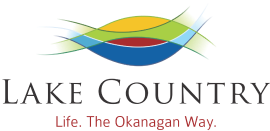Lake water is not pristine and beach water quality can fluctuate due to a number of factors including rain events, creek outflow, changing environmental factors and animal waste.
Additionally, Water Quality is typically poorer in the summer when warm weather increases bacterial growth and swimmers stir up the lake bottom.
Water Testing
Each summer, municipal staff collect water samples from a number of our beaches for Interior Health to test and analyze. Beaches that historically have shown higher than acceptable coliform counts at certain periods during the summer months are sampled weekly.
Beach Water Quality Advisory
A Beach Water Quality Advisory is a notice to swimmers that bacterial levels are higher than those allowed in the Guidelines for Canadian Recreational Water Quality. The maximum allowable number of E. coli bacteria in recreational water is 400 per 100-millilitre sample.
The risk of infection is directly related to bacterial counts in the water. When E. coli reaches 400 units per 100 millilitre sample it’s expected that one per cent of bathers may develop gastrointestinal illness (GI) if these bacteria are ingested. For every one GI illness, two to three other illnesses - skin rashes (swimmer’s itch excluded) and eye, ear and throat symptoms - can be expected. The very young, the very old and people with weakened immunity are the most susceptible.
When a Beach Water Quality Advisory is in place signage will be posted at the affected beach. Once testing shows bacteria levels have returned to acceptable levels the Advisory will be lifted and the signage removed.
For more information on beach water quality, contact Interior Health or call 250 862-4200.
Algae Blooms
Freshwater lakes in Lake Country occasionally experience algae blooms, particularly during spring runoff. Blooms are the result of changing conditions and nutrients present in the aquatic system and causing excessive growth of algae. Not all algae blooms are harmful, but some like blue-green algae, or cyanobacteria, should be avoided.
At the instruction of the Interior Health Authority (IHA), the District of Lake Country samples local freshwater lakes for testing by IHA throughout the year. If a harmful algae bloom is detected, IHA will advise the District to post additional signage at the public beach access points of the impacted lake. When the harmful bloom has disappeared, IHA will advise the District that the signs can be removed and subscribers will be automatically notified by email.

Frequently Asked Questions
Goose Management
The District of Lake Country is taking measures to enhance beach water quality including the implementation of a valley-wide Goose Management program.
